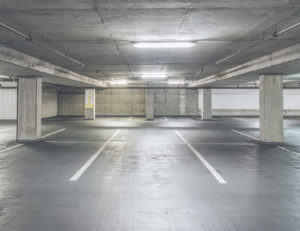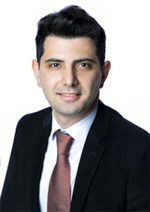by Okan Gurbuz
When commuting patterns change (as they have amid the COVID-19 pandemic), so do the patterns of land use. With fewer people driving to work or to school, fewer parking spaces are filled, leaving empty reminders of our hefty public and private investment in vehicle storage space. As with any infrastructure asset requiring a large financial outlay, it’s important that we ensure the best return on that investment.
That’s the intent behind a new research effort at the Center for International Intelligent Transportation Research (CIITR). With project leadership from The University of Texas at El Paso (UTEP), we’re developing level-of-service (LOS) analysis procedures along with a performance measurement system (PMS) for parking facilities at UTEP. Currently, no LOS analysis methodology exists for transportation engineers to evaluate the operational performance of a parking facility from the user’s perspective. We’re looking at three different types of parking facilities: multi-level garages with a single access point, uncovered surface lots with a single access point, and surface lots with multiple access points.
Our current effort builds on work we did while I was a Ph.D. student at UTEP. My advisor and I developed the SPARKMAN software model, which helped to predict parking demand and set permit prices for student parking. We surveyed students regarding their campus parking needs, which allowed us to develop LOS criteria based in part on a new approach that considers the search time to find parking spaces.

Given the large financial interest in infrastructure assets like parking garages, helping managing agencies understand how to get the most from the investment is a priority for this CIITR research project.
The project was funded primarily through Connected Cities with Smart Transportation (C2SMART), a USDOT Transportation Center at New York University. C2SMART is also funding the new phase of our work, with additional funding from CIITR. The International Bridges Department of the City of El Paso, which also manages city parking meters, is collaborating on the study.
Search time for spaces is just one example of LOS criteria for parking facilities. By developing a PMS for those facilities, we can identify and measure multiple parameters to help engineers evaluate how well a parking lot or garage is meeting its intended purpose. With this knowledge, cities and other entities that own parking facilities can assess their utility by setting goals, defining standards, and making adjustments to maximize their operational efficiency.
Our PMS for parking facilities should also support better use and integration of “smart parking” technologies — those that predict parking availability, detect illegal parking, and allow for adjusted parking prices in real time (similar in concept to roadway congestion pricing). One possible improvement we foresee is the linking of all parking facilities in a smart system, allowing for the sharing of parking condition information across a city or campus in real time.
Parking lots and garages might be very simple in their design and appearance, but they’re not inexpensive to build. That’s why it’s important to have some reliable means to ensure they do what they’re designed to do. Our PMS for parking facilities can be a practical and valuable tool to achieve that purpose, with the potential of being included in future editions of the Highway Capacity Manual.
Ultimately, what we learn can help inform big decisions on infrastructure investments intended to cost-effectively serve the needs of system users, recognizing that those requirements in future years may bear little resemblance to what we know and experience today.
The coronavirus pandemic is raising questions about every facet of our current lives, including transportation. And although COVID-19 didn’t prompt our current research, it’s indirectly giving our work an added degree of relevance. That’s why we believe it’s appropriate to take a close look at every aspect of how we utilize our motor vehicles — including the question of where we put them when they’re not in use.
Okan Gurbuz is an assistant research scientist in TTI’s Center for International Intelligent Transportation Research.

